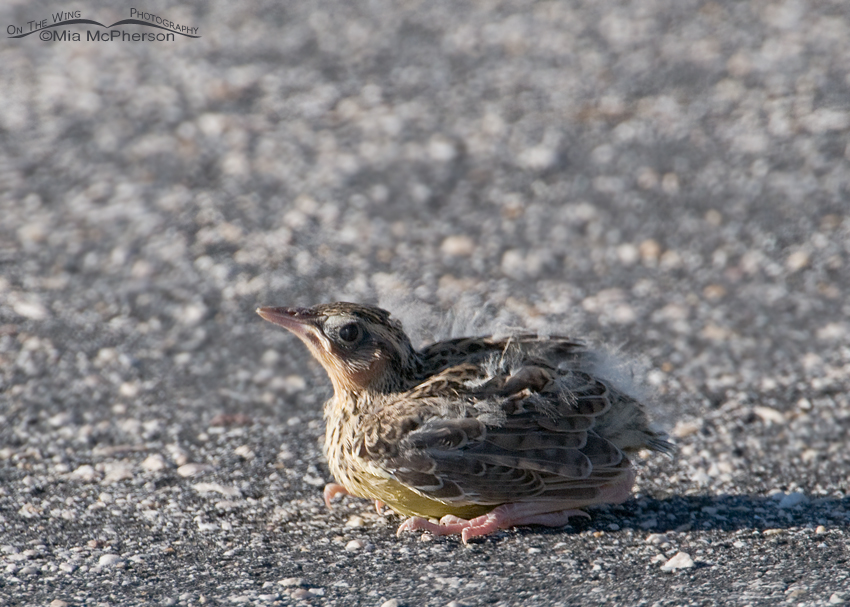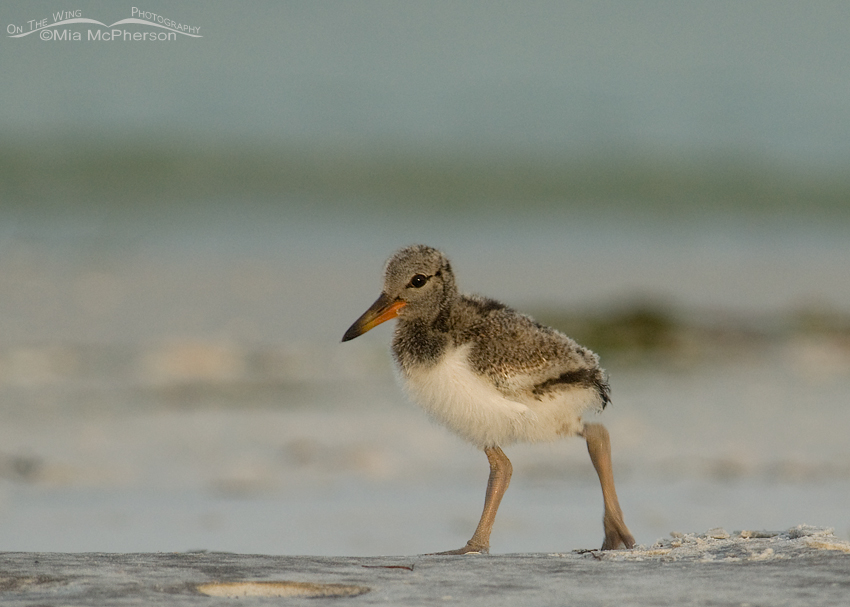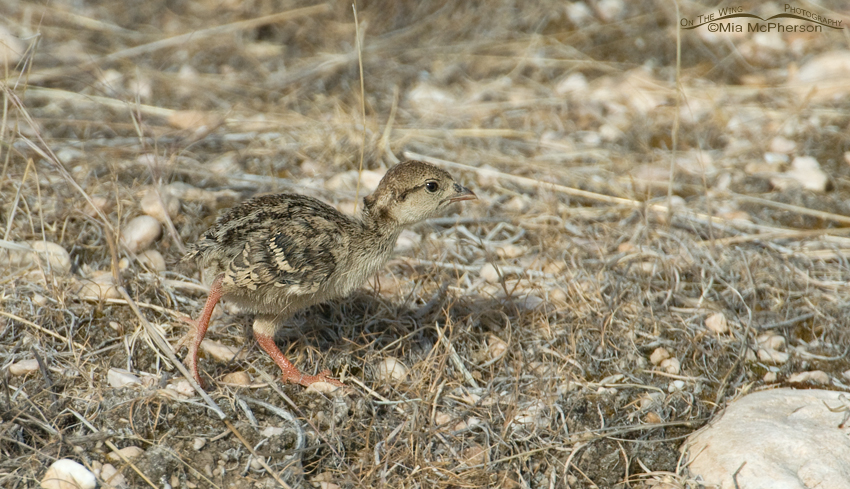Fluffy little chicks are adorable, they make people “ohh” and “aww” and those that hit the ground running not long after hatching are especially appealing to some folks. But they need respect and they need space so we don’t endanger them.
During this time of the year I see tons of nest and chick images posted on the internet on photo sharing sites and I feel my self cringe when I can see that someone has walked up to a nest and taken images of nestlings or even the unhatched eggs with short lens because I know they got too close. Those actions can put the young birds at risk.
The American Oystercatcher image above was taken from a long distance and this is a large crop (43% of original frame) which I normally do not like to make but in my mind the image is never as important as the well being and safety of my subject.
When we approach a nest we leave a scent trail that could possibly attract predators to the nest which might cause the eggs or the chicks to be eaten by a predator. This Chukar chick image is another case where I took a large crop (%39 of the original frame) rather than approach the bird closely which would have stressed it or the adult nearby.
Ethics on photographing nesting birds:
- Do not approach too closely
- If the birds show any sign of distress, back away
- Don’t trim leaves, twigs or branches to get a clearer shot, you may inadvertently attract predators or cause the eggs/chicks to over heat
- Follow local, state and federal guidelines concerning nesting birds
- Don’t harass the birds to get an action shot
- Don’t stay a long time with nesting birds or chicks, that disrupts their normal behavior
- Always remember that your scent may draw predators to the area of nesting birds or birds with chicks.
For more information on the ethics of photographing nesting birds or chicks check out the Principles of Birding Ethics published by the American Birding Association.
 Western Meadowlark chick (sorry for the poor quality)
Western Meadowlark chick (sorry for the poor quality)
Sometimes we might need to help chicks get to a safe place, like the example below.
Two days ago we spotted a ball of fluff in the middle of a road on Antelope Island State Park and after scoping it with my lens I could see that it was a Western Meadowlark fledgling, because the road wasn’t a safe place I took a few images, got out of the pick up and walked up behind the chick. I put my hands near the back of the fledgling and just that movement alone was enough to cause the chick to move towards the shoulder of the road and the adult. Once I knew the chick was safely off of the road I got back into the pickup and left.
At this time of the year we should be careful where we step, where we drive and how closely we approach nests and chicks, it is very important not to stress the chicks or adults.
Please give nests and chicks respect.
Mia




Thank you for this, Mia! And thanks for helping the Meadowlark, too! One thing to add … for anyone who does take an ethical nest photo and posts it online, be sure to add a descriptor of how far away you were, how long your lens was, why it’s important not to disrupt nesting birds or young birds, etc. — just as Mia did in this post. I don’t take a lot of nest shots, but when I have the chance to do so without intruding, I’ll bold-face a head and a paragraph on field craft, so that anyone who comes upon the photo will also see a statement about wildlife ethics. In some ways, it’s better than not posting at all, if even a few people get the message.
On helping fledglings, man, I feel like a stressed out mother during this season! My friends kid me that fledgling season is as tough on me as it is on the mother birds. I find myself stopping traffic, lifting fledglings to safe branches, rushing out of a restaurant to make sure a fledgling doesn’t get hurt in foot traffic …. I get very happy when I see those little ones morphing into teenagers. 🙂
Ingrid,
This is a stressful time of the year for me as a photographer, I can only imagine how stressful it is for too. I’ll breathe a bit easier once all of the birds have fledged and can safely get away from any danger, humans included!
Very informative and important reminder for us all!
Yes, it is important, thanks Julie.
I appreciate your words of wisdom and will try to be mindful. Thank you. Love the photos of the young , they are adorable.
Thanks Jane!
Great post! It reminds me of the little Anhinga fledgling I found by an all-alligator territory. It was taking a nap by the alligator spot so I removed it to place it in safer area. It was a difficult decision to make, since nature is the one who should decide; alligators are just as entitled to a good meal as an Anhinga.
Maria, I firmly believe in allowing nature to takes its course but when there is a manmade issue, for instance the road on the island, I will try to help nature cross the boundaries we have created. Had the road not been there I wouldn’t have felt that the Meadowlark fledgling was in danger from being hit by another vehicle.
Great post and important! Cute shots of the chicks, Mia!
Thank you Eileen.
Good advice Mia. Incredible what people will do. It drives me nuts and I’ve lost my cool on several incidents where the careless birders moved too close. I feel like an old man sometimes…..and these are to people older than myself!!! Is the picture more important than the bird’s welfare? The issue comes from these people not caring.
Chris, This time of the year we see so many people that might not be educated about wildlife ethics and those people we can help them to understand why it is important. The ones that really toast my buns are the ones who should know better and do it anyway.
Indeed! That is why I love my long telephoto lenses! 🙂
Me too Sherry!
Mia, thank you for adding your voice to those of us broadcasting this message! (And lovely photos!)
Thank you Kim! I hope our messages about this issue get spread all over the planet!
Mia, thank you for this well-written post and for documenting that you can capture wonderful photos without getting close to the nest or chicks. I was on another photographer’s blog the other day and he had posted photos of him HOLDING the chick. I was stunned at the audacity of such a move from someone who should know better. I hope this gets wide circulation and will continually share it with others.
Tami, I wish I could say I am surprised about the other
photographerperson showing images on his blog where he is holding the chick, but I am not because it seems to happen far more often than we know.Intelligent and sound advice Mia ( not to mention awesome photos) .Thanks !
Thank you John!